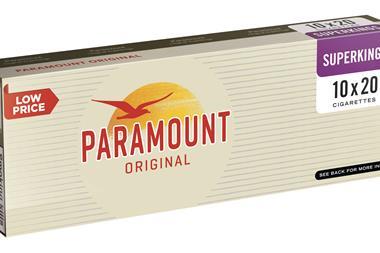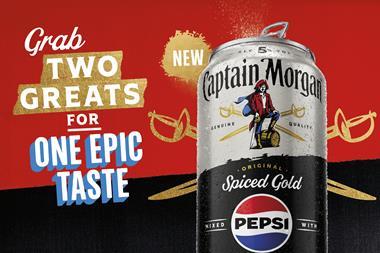The tobacco sector may be under pressure, but its importance to c-stores fails to extinguish, as Gaelle Walker finds out
Despite ever-increasing regulatory pressures, the UK tobacco market continues to show a remarkable resilience.
About one in four UK adults currently choose to smoke, and they spend a whopping £13bn a year on their preferred brands - that's almost twice as much money as is spent on soft drinks.
And if that's not enough to prove that the tobacco category remains relevant to modern convenience retailing, then consider this: seven of the UK's top 10 fmcg brands by sales value are cigarettes.
This figure demonstrates just how important tobacco is to retailers and to the economy. Tobacco sales can represent up to 30% of a c-store's turnover, while some 80% of the money made on sales goes directly to the Treasury in taxation.
UK adults currently spend more than £6bn a year on cigarettes, £400m on roll-your-own (RYO) tobacco, more than £160m on cigars, nearly £65m on rolling papers, and about £25m on pipe tobacco products in c-stores alone.
Tobacco is also a catalyst for impulse sales of other products and figures show that smokers visit stores more frequently and spend more than non-smokers.
The tobacco market illustrated just how resilient it could be in 2007. New laws to ban smoking in public places and a hike in the smoking age limit from 16 to 18 resulted in an initial 4% drop in sales, but figures suggest that the market is already on the road to recovery, mirroring experiences in the Irish Republic and Scotland where similar bans were introduced in 2004 and 2006 respectively.
However, 2008 and beyond look to be tougher still, with a swathe of new measures under consultation, including display restrictions and a ban on 10s packs. But, for now at least, the tobacco category is too big to be ignored.
Paul Batchelor,Nisa-Today's trading manager
"The tobacco market hiccoughed immediately following the smoking ban, but has now recovered to levels similar to those prior to July 2007.
"The economy and value sectors of the cigarette category are the only areas within cigarettes showing growth at present. Both manufacturers' price increases and duty increases are at such a level as to encourage consumers to downtrade from premium offerings. The price inflation on cigarettes is also a reason for many consumers moving into RYO - hence the increase in sales of this sector. The concept has become more in vogue, too.
"Windsor Blue and Sterling have been the major successes in cigarettes this year, while in RYO it has been Amber Leaf and Cutters Choice.
"The category to have been most affected by the smoking ban is cigars. The increase in miniatures sales reflects the need for a product that can be smoked outside without it taking too long. Retailers need to ensure that they have full availability to keep their sales up as research shows that 56% of tobacco consumers will leave a store without purchasing if their brand is out of stock.
"After legislation, one of the biggest issues is counterfeiting and smuggling. Retailers must inform the authorities if they know where this is happening. If someone was stealing from their store they wouldn't hesitate to do so."
Despite ever-increasing regulatory pressures, the UK tobacco market continues to show a remarkable resilience.
About one in four UK adults currently choose to smoke, and they spend a whopping £13bn a year on their preferred brands - that's almost twice as much money as is spent on soft drinks.
And if that's not enough to prove that the tobacco category remains relevant to modern convenience retailing, then consider this: seven of the UK's top 10 fmcg brands by sales value are cigarettes.
This figure demonstrates just how important tobacco is to retailers and to the economy. Tobacco sales can represent up to 30% of a c-store's turnover, while some 80% of the money made on sales goes directly to the Treasury in taxation.
UK adults currently spend more than £6bn a year on cigarettes, £400m on roll-your-own (RYO) tobacco, more than £160m on cigars, nearly £65m on rolling papers, and about £25m on pipe tobacco products in c-stores alone.
Tobacco is also a catalyst for impulse sales of other products and figures show that smokers visit stores more frequently and spend more than non-smokers.
The tobacco market illustrated just how resilient it could be in 2007. New laws to ban smoking in public places and a hike in the smoking age limit from 16 to 18 resulted in an initial 4% drop in sales, but figures suggest that the market is already on the road to recovery, mirroring experiences in the Irish Republic and Scotland where similar bans were introduced in 2004 and 2006 respectively.
However, 2008 and beyond look to be tougher still, with a swathe of new measures under consultation, including display restrictions and a ban on 10s packs. But, for now at least, the tobacco category is too big to be ignored.
The big picture
Paul Batchelor,Nisa-Today's trading manager
"The tobacco market hiccoughed immediately following the smoking ban, but has now recovered to levels similar to those prior to July 2007.
"The economy and value sectors of the cigarette category are the only areas within cigarettes showing growth at present. Both manufacturers' price increases and duty increases are at such a level as to encourage consumers to downtrade from premium offerings. The price inflation on cigarettes is also a reason for many consumers moving into RYO - hence the increase in sales of this sector. The concept has become more in vogue, too.
"Windsor Blue and Sterling have been the major successes in cigarettes this year, while in RYO it has been Amber Leaf and Cutters Choice.
"The category to have been most affected by the smoking ban is cigars. The increase in miniatures sales reflects the need for a product that can be smoked outside without it taking too long. Retailers need to ensure that they have full availability to keep their sales up as research shows that 56% of tobacco consumers will leave a store without purchasing if their brand is out of stock.
"After legislation, one of the biggest issues is counterfeiting and smuggling. Retailers must inform the authorities if they know where this is happening. If someone was stealing from their store they wouldn't hesitate to do so."



























No comments yet